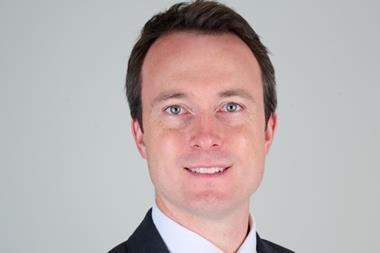Prepare for a wave of insurer acquisitions as capital becomes king
If recent years have been marked by consolidation in the broker market, the next two years are likely to be all about consolidation among insurers. Mergers and acquisitions have already started in the Lloyd’s market. Beazley has bought US insurer First State Management Group while Lloyd’s insurer Chaucer is being circled by a number of potential buyers, including Novae.
Capital levels will drive this wave of consolidation. Under-capitalised insurers will need to raise funds; those with excess capital will be looking for ways to use the surplus more efficiently.
Investment losses have eroded the insurance sector’s capital levels over the past year as the financial markets have plunged and claims costs have risen (2008 was the second most expensive natural catastrophe year on record). This has left some insurers in a weakened position, with rating agency Fitch warning of rating downgrades this year.
In addition, rates in some lines of business, such as catastrophe reinsurance, have risen, requiring some insurers to raise extra capital to write more business. The falling value of sterling against the dollar also means some insurers with US business have to raise funds.
A rights issue is the simplest way to raise money. But the acquisition of a capital-rich business can also achieve this. Novae itself is seen as an attractive acquisition target as it has £70m of surplus capital that could be unlocked.
Meanwhile, for insurers fortunate enough to have excess capital, an acquisition can mean diversification in terms of business lines, geographic spread and skills. There are also prudential benefits to a diverse business under the forthcoming Solvency II risk-based capital regime as relatively less regulatory capital could be required.
Financing an acquisition will be challenging in the current climate. Some insurers, such as Amlin, already have the capital to make a purchase; others will need to find the necessary funds. Debt is difficult to raise at the moment, but the equity market is a viable route. Mark Flenner, head of non-life at KPMG corporate finance, says companies will look for alternative means to fund acquisitions such as all-share deals and transactions supported by reinsurance structures.
The Lloyd’s market is still seen as an ideal target for Bermudian insurers looking to diversify from catastrophe business and gain access to Lloyd’s global licences. The interest in Chaucer from Novae has also raised the prospect of a wave of consolidation among Lloyd’s insurers.
But there are dangers too. Acquisitions in the insurance market do not always create the anticipated value. Munich Re’s purchase of American Re is a prime example: Munich Re had to pump in billions of dollars to prop up the loss-making American Re after buying it.
Conversely, Catlin’s acquisition of Wellington worked. Despite losing a number of senior people, the combined company managed to retain much of its business.
What steps can be taken to ensure the acquisition creates value? First, it is vital to be clear why the deal is being done. If the strategic reason is not clear, then the deal should not proceed, according to Bryan Joseph, a partner in PricewaterhouseCoopers.
Proper due diligence must also be undertaken. It is imperative to understand fully the target business to avoid problems with legacy issues and to be fully aware of the capital implications of the purchase. A strategy is needed to address any legacy issues, as is a good understanding of the senior management of the target business.
michael.faulkner@instimes.co.uk
Key points
• Capital issues will drive insurers to make acquisitions
• An under-capitalised insurer could use a deal to boost capital
• An acquisition could enable an insurer to use excess capital more efficiently
• Care must be taken to ensure the deal creates value
Hosted by comedian and actor Tom Allen, 34 Gold, 23 Silver and 22 Bronze awards were handed out across an amazing 34 categories recognising brilliance and innovation right across the breadth of UK general insurance.












































